Practice Free 200-301 Exam Online Questions
DRAG DROP
Refer to the exhibit.
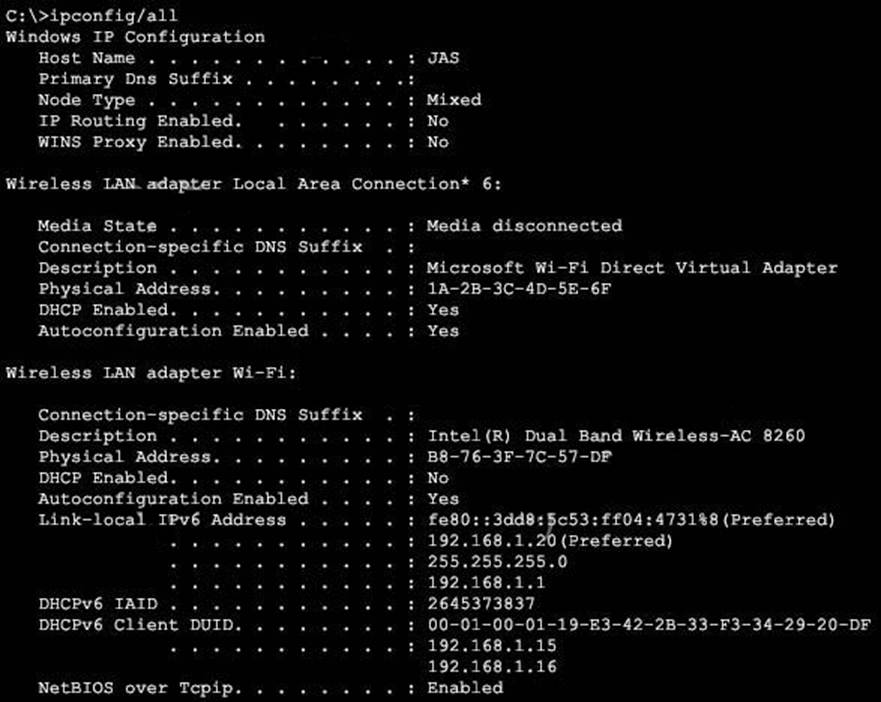
An engineer is tasked with verifying network configuration parameters on a client workstation to report back to the team lead.
Drag and drop the node identifiers from the left onto the network parameters on the right.


Refer to the exhibit.

A static route must be configured on R14 to forward traffic for the 172 21 34 0/25 network that resides on R86.
Which command must be used to fulfill the request?
- A . ip route 172.21.34.0 255.255.255.192 10.73.65.65
- B . ip route 172.21.34.0 255.255.255.0 10.73.65.65
- C . ip route 172.21.34.0 255.255.128.0 10.73.65.64
- D . ip route 172.21.34.0 255.255.255.128 10.73.65.66
DRAG DROP
Refer to the exhibit.
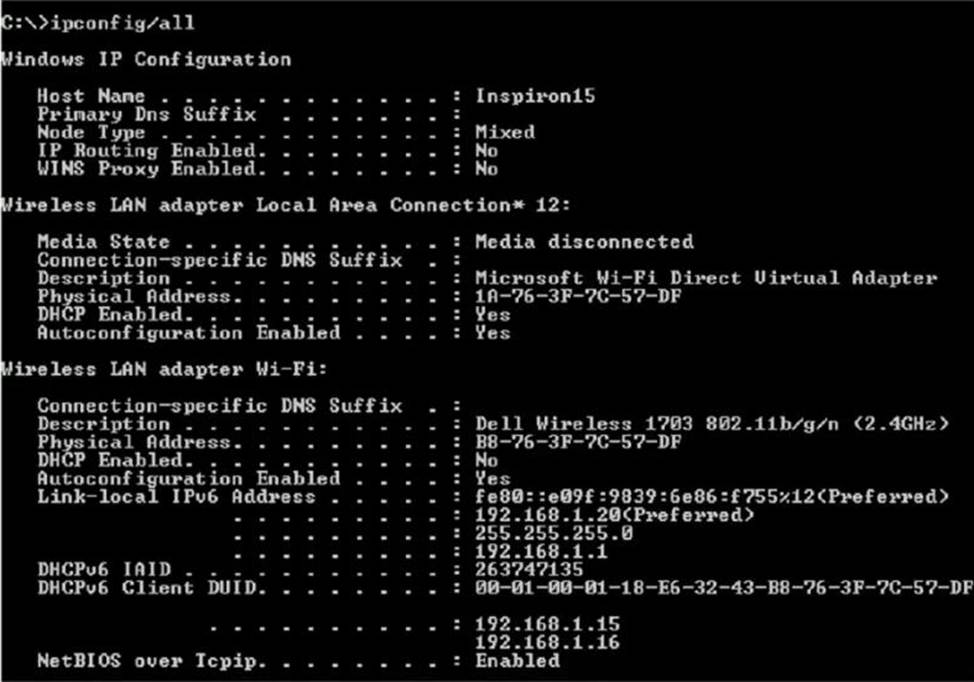
An engineer is required to verify that the network parameters are valid for the users wireless LAN connectivity on a /24 subnet..
Drag and drop the values from the left onto the network parameters on the right. Not all values are used.
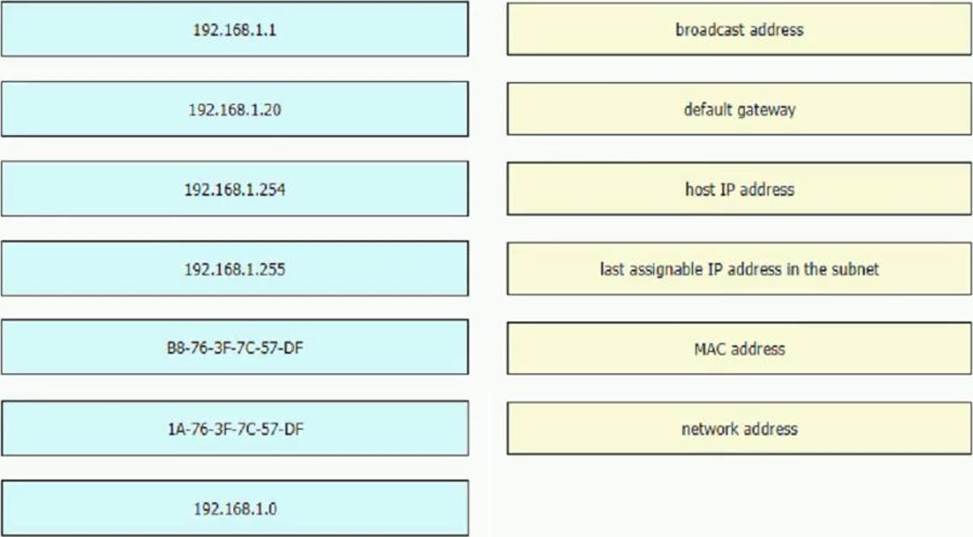
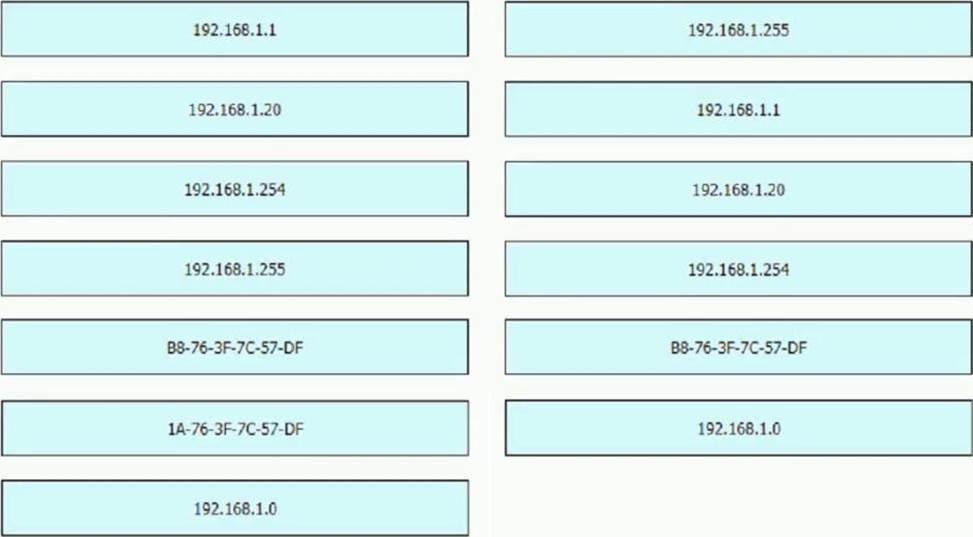
Refer to the exhibit.

Site A was recently connected to site B over a new single-mode fiber path. Users at site A report Intermittent connectivity Issues with applications hosted at site B.
What is the reason for the problem?
- A . Heavy usage is causing high latency.
- B . An incorrect type of transceiver has been inserted into a device on the link.
- C . physical network errors are being transmitted between the two sites.
- D . The wrong cable type was used to make the connection.
Which state does the switch port move to when PortFast is enabled?
- A . learning
- B . forwarding
- C . blocking
- D . listening
A frame that enters a switch fails the Frame Check Sequence.
Which two interface counters are incremented? (Choose two)
- A . runts
- B . giants
- C . frame
- D . CRC
- E . input errors
DE
Explanation:
Whenever the physical transmission has problems, the receiving device might receive a frame whose bits have changed values. These frames do not pass the error detection logic as implemented in the FCS field in the Ethernet trailer. The receiving device discards the frame and counts it as some kind of input error.
Cisco switches list this error as a CRC error. Cyclic redundancy check (CRC) is a term related to how the FCS math detects an error.
The “input errors” includes runts, giants, no buffer, CRC, frame, overrun, and ignored counts.
The output below show the interface counters with the “show interface s0/0/0” command:
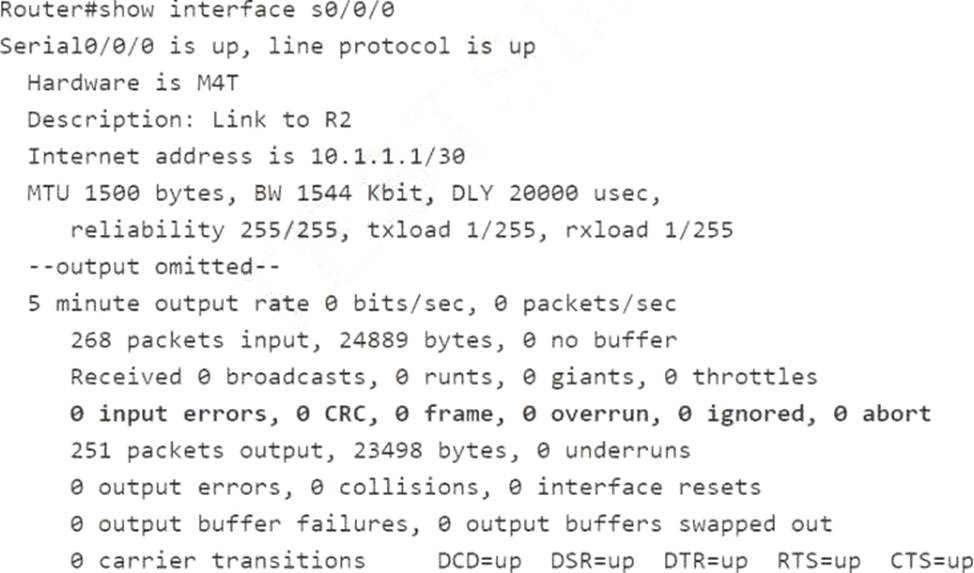
To improve corporate security, an organization is planning to implement badge authentication to limit access to the data center.
Which element of a security program is being deployed?
- A . user training
- B . user awareness
- C . vulnerability verification
- D . physical access control
How do TCP and UDP differ in the way that they establish a connection between two endpoints?
- A . TCP uses synchronization packets, and UDP uses acknowledgment packets.
- B . UDP uses SYN, SYN ACK and FIN bits in the frame header while TCP uses SYN, SYN ACK and ACK bits
- C . UDP provides reliable message transfer and TCP is a connectionless protocol
- D . TCP uses the three-way handshake and UDP does not guarantee message delivery
What are two protocols within the IPsec suite? (Choose two)
- A . AH
- B . 3DES
- C . ESP
- D . TLS
- E . AES
What does a switch search for in the CAM table when forwarding a frame?
- A . source MAC address and aging time
- B . destination MAC address and flush time
- C . source MAC address and source port
- D . destination MAC address and destination port
D
Explanation:
A switch searches for the destination MAC address and the destination port in the CAM table when forwarding a frame. The CAM table, or content addressable memory table, is a data structure that stores the MAC addresses of the devices connected to the switch ports and their associated VLANs. The switch uses the CAM table to make layer 2 forwarding decisions based on the destination MAC address of a frame. When a frame arrives at a switch port, the switch first learns the source MAC address and the source port of the frame and updates the CAM table accordingly. Then, the switch looks up the destination MAC address of the frame in the CAM table and finds the corresponding destination port. If there is a match, the switch forwards the frame out of that port only. If there is no match, the switch floods the frame out of all ports except the source port123.
Reference:
1: Why is the CAM table in a switch called CAM table and not MAC table even though it holds MAC addresses?
2: ARP and CAM Table
3: The CAM Table or MAC address Table
